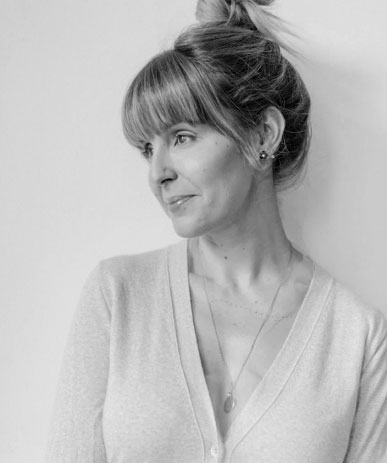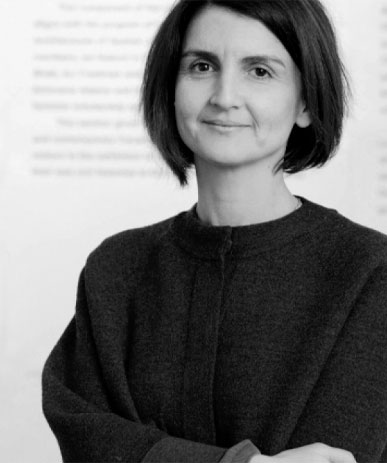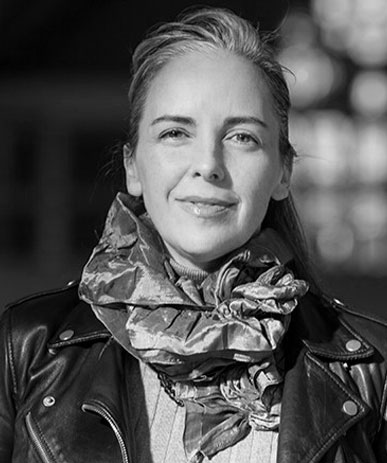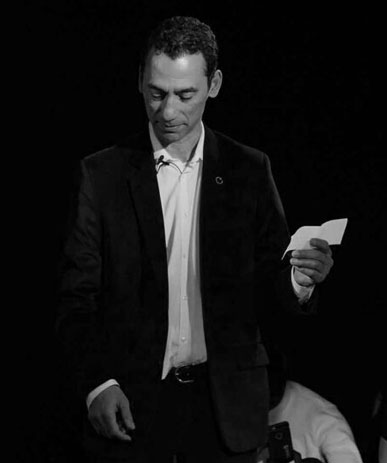CASE STUDIES
Restorative Justice
* For image references, please scroll to the bottom of the page.
Author of case study: Marcela Torres Molano
Geopolitical location of space:
Teatro Faenza, Calle 22
Bogotá, Cundinamarca
Extant? Yes
Architect:
Architect: Arturo Tapia
Engineer: Jorge Muñoz
Inaugurated on April 3, 1924.
23 November 2019
The Black Market for Useful Knowledge and Non-Knowledge (“Mercado clandestino de conocimiento y no-conocimiento útil”) was a listening event of the Truth and Reconciliation Commission in cooperation with the Mobile Academy Berlin. It was supported by the German Colombian Peace Institute (CAPAZ) and the Central Bank of Colombia. The event was an encounter of 60 experts such as activists, politicians, scientists, ex-combatants and artists from different parts of the country.
The topic of the event “Water and Conflict” was established by the Commission as a response to how “In Colombia, the rivers and the bodies of water are cemeteries for countless victims, strategic territories for combat, and contaminated places. But they are also sites of memory, life, sustenance and resistance.”
No, official encounters between victims and perpetrators did not take place in this event, however this was an initiative of the Truth and Reconciliation Commission to allow the dialogue between civil society and experts such as activists and ex-combatants.
Yes, the whole event was designed with the main purpose of allowing one to one conversations and group listening from the public. The use of the acoustic of the space and audio technologies allowed the implementation of two rounds of 66 simultaneous conversations. The dialogues could be held in five different languages, including Ticuna, a traditional Indigenous language. While the participants were having one to one conversations, the public was invited to listen to some of the conversations through a headphone system, and to read the transcripts on screens located around the theatre. The conversations between experts and individuals were intended to be informal, direct and to avoid type of hierarchical order.
Experts such as activists, politicians, scientists, ex-combatants and artists from different parts of the country and general public.
This event took place in a private restored theatre that belongs to the Central University, a private education institution in Bogotá.
A very important political aspect of this event was the day of the event, enormous community mobilisations against the brutality of police and the lack of interest of the government with the peace agreement gathered across Bogotá and Colombia. During the event, the doors of the theatre had to be closed on many occasions because of safety reasons.
The Faenza Theatre is an art nouveau architecture building that opened its doors in 1924. It was initially used for musical performances and became a cinema theatre for independent films in 1948. In 1975, it became part of the National Heritage buildings of Colombia and it was later transformed into a low budget porn film theatre. The Faenza was empty from 1980 until 2004, and was renovated in 2005 by the Central University.
The theatre has a rectangular shape of 21 meters wide by 45 meters long with a capacity of 1000 spectators. It is a multipurpose room that allows the transformation of the space depending on the required use. It is now used for social or academic purposes. For the Listening event, there were specific spatial elements that made the conversations and the listening possible: first, there was a clear disposition of the space, where conversations were happening in the middle, while the public was seated around this central space. Second, the use of tables for two people allowed the conversations to happen on an informal level and avoided any type of hierarchy between the experts and the non-experts. Third, the use of warm lighting and sounds as time counting mechanisms allowed the organisation of the event without causing disruption to the conversations. Although the theatre is considerably big and formal, through the spatial distribution and the aesthetics of the event, the place became a welcoming and warm space.
According to the participants of the event, the atmosphere of the space, the spatial disposition and the opportunity for one to one dialogues, allowed to generate a feeling of confidence and safety between the interlocutors. One important element of this event was the possibility of whispering as a means of communication that created a deeper human connection.
Moreover, the possibility of moving the conversation throughout the space by using screens and headphone mechanisms, allowed all the participants to be indirectly involved in most of the conversations. The experience of participants became the main element for creating a welcoming and safe atmosphere for listening.
One important aspect of the event was that it took place in a very contested area of the city, where large protests against the government were taking place on the same exact day. The protests that started on November 21, 2020, and lasted for weeks, were one of the biggest community mobilisations against the brutality of police and the lack of interest of the government in the implementation of the peace agreement.

is an author, speaker, columnist, and podcaster in the fields of architecture and decorative arts. She is completing her MA in Art History at Concordia University, Montréal, and holds a Bachelor of Commerce with a major in Marketing from John Molson School of Business. She studied Industrial Psychology in Los Angeles, California. Sicotte is the author of two published books on design (2015, 2018) published by Les Éditions Cardinal.

is a Colombian PhD candidate in the Department of Art History at Concordia University. She has a background in architectural design and community activism and holds a master’s degree in Building and Urban Design from the Bartlett School of Architecture in London, England. Her interests focus on socially-engaged art, social movements, collaborative activism in post-conflict scenarios, collectively-produced art, and art produced in relation to the built environment.

is a PhD candidate in Humanities at Concordia University. His research focuses on spatial agency, social aesthetics, youth narratives, and graphic representations of urban memory. He has published on the relationship between children, play, and public space in Cartagena, Colombia. He has also worked as an editor on literary projects, including Territorio Fértil, which received the María Nelly Murillo Hinestroza award for Afro-Colombian literature.

is Associate Professor and Canada Research Chair in Architectures of Spatial Justice (Tier 2) at the Peter Guo-hua Fu School of Architecture at McGill University, Montréal, Québec, Canada. Her research interests include low-income housing and participatory design, civil protest and urban design, and campus landscapes and race. Her publications include the co-edited book, Orienting Istanbul (2010) and solo-authored book, Istanbul Open City (2018).

is an artist and a professor of Art History at Concordia University. Her work focuses on women and the history of the built environment, urban landscapes, research-creation, and oral history. She has published on the spatial history of the suffrage movement, public art, gardens, and the politics of urban change. In addition to her research on the spaces of restorative and transitional justice, she is leading an oral history project on the urban memories of diverse Montrealers.

is Associate Professor in the Department of Theatre at Concordia University, Montreal (Quebec, Canada). He is also the second co-director of Concordia’s Centre for Oral History and Digital Storytelling. His latest publications explore listening in the context of post-conflict performances of memory. For instance, see ‘Facilitating voicing and listening in the context of post-conflict performances of memory. The Colombian scenario.’ In: De Nardi, S., Orange, H., et al. Routledge Handbook of Memoryscapes. Routledge: London. (2019), and his article ‘Not being able to speak is torture: performing listening to painful narratives’. International Journal of Transitional Justice, Special Issue Creative Approaches to Transitional Justice: Contributions of Arts and Culture. (March, 2020)